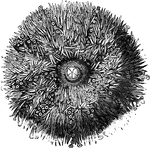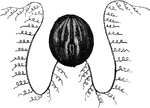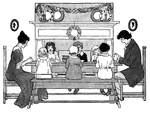
Anomalops Palpebratus
"A genus of fishes, typical of the family Anomalopidæ: so called from the remarkable structure…
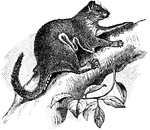
Scale-Tailed Squirrel
"A remarkable family of flying rodents of Africa; the scale-tailed squirrels."-Whitney, 1902

Geranium Plant Louse
"Aphis; a genus of small plant-sucking insects, of the family Aphididæ and order Homoptera."-Whitney,…

Apple Louse
"Aphis; a genus of small plant-sucking insects, of the family Aphididæ and order Homoptera."-Whitney,…

Apollo Butterfly
"The Apollo butterfly, P. Apollo, is found in the damp meadows of the high Alps; the wings…
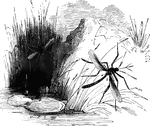
Gnats
"In the family Culicidae, or Gnats, which include several pre-eminently bloodthirsty species,…
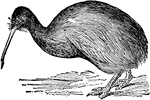
Apteryx
"Apteryx is a genus of birds, the typical one of the family apterygidæ. Two species are known-…
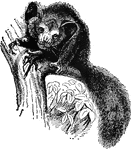
Aye-Aye
"The Aye-aye is an animal of Madagascar, so called from its cry, now referred to the lemur family. It…

Drone Bee
"Bee is the common name given to a large family of hymenopterous or membranous-winged insects, of which…
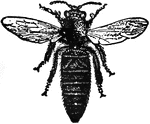
Queen Bee
"Bee is the common name given to a large family of hymenopterous or membranous-winged insects, of which…

Worker Bee
"Bee is the common name given to a large family of hymenopterous or membranous-winged insects, of which…

Royal Cells
"Bee is the common name given to a large family of hymenopterous or membranous-winged insects, of which…

Water Scorpion
"The Nepa cinerea is a European example of this family, which may be met with there in every…
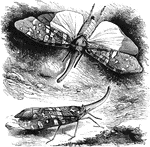
Lantern Fly
"The family of Fulgorina includes the Lantern-flies, of which a large species inhabiting…
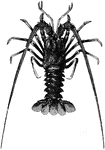
Spiny lobster
"The Spiny Lobster, Palinurus vulgaris, which may be taken as the type of the family, often…

Wood-louse
"The family Oniscidae, including the well-known Wood-Louse, Oniscus murarius, and many similar…

Sand-hopper
"The Common Sand-hopper, Talitrus locusta, which may be met with in thousands upon thousands…

Cyclops
"The best-known form of the Copepoda is the genus Cyclops, specimens of whch may be found in…
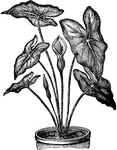
Caladium
"Caladium is a genus of endogenous plants, the typical one of the family caladieæ. They are cultivated…
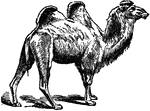
Camel
"Camel is a genus of ruminant quadrupeds, characterized by the absence of horns; a fissure in the upper…
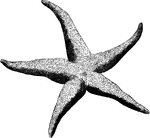
Five-fingered jack
"In this family the arms appear to be merely prolongations of the disc; they are suaully five in number,…

Male Cochineal Insect
"Cochineal is a dye-stuff employed in dyeing scarlet and crimson; consists of the bodies of the femals…
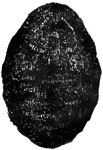
Female Cochineal Insect
"Cochineal is a dye-stuff employed in dyeing scarlet and crimson; consists of the bodies of the femals…
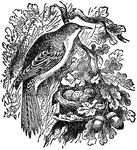
Common Creeper
"Creepers are a family of birds which strongly resemble the woodpeckers in their habit of creeping on…

Sea Eagle
"Eagle is a name given to many birds of prey in the family Falconidæ. The golden eagle, the white-headed…

Tiger Head
"Felidæ or Felinæ is the cat tribe, a family of carnivorous quadrupeds, including the domestic…
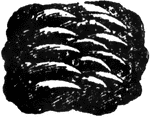
Partial Tiger Tongue
"Felidæ or Felinæ is the cat tribe, a family of carnivorous quadrupeds, including the domestic…

Tiger Paw
"Felidæ or Felinæ is the cat tribe, a family of carnivorous quadrupeds, including the domestic…

Goosander
"The Goosander is a web-footed bird in the duck family. The adult male, which measures 26 inches in…
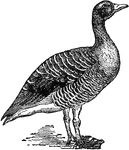
Wild Goose
"Goose is the name of a well-known family of natatorial birds. The domestic goose is believed to have…

Goosander
"The Goosander is a web-footed bird in the duck family. The adult male, which measures 26 inches in…

Grayling
"The Grayling is a genus of fresh-water fishes in the salmon family, distinguished from trout, etc.,…
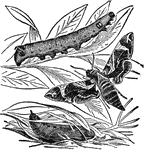
Hawk Moth
"Hawk Moth is a family of the lepidopterous insects, forming along with the clear winged moths and the…

Tinamou
"Tinamou is the name given to a genus and family of birds occurring in South America, and allied in…

Common River Trout
"Trout is a term applied generally to various species of fishes belonging to the salmon family. The…

Turnstone
"Turnstone is a small genus of birds of the plover family, intermediate between the true plovers and…

Common Vipers
"Viper is a genus of venomous snakes. This family includes many important forms– e. g., the common…

Common Viper
"Viper is a genus of venomous snakes. This family includes many important forms– e. g., the common…
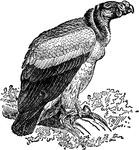
King Vulture
"A Vulture is any member of the family Vulturidæ included among the birds of prey. In all the…

Astraea rotulosa
"It is to this family more especially that the formation of the coral reeds is to be attributed. In…
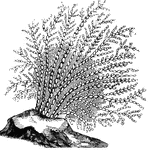
Sea-fan
"In the family of the Gorgonidae the substance of the polypidom is collected into a solid central axis,…
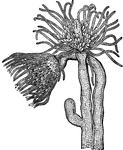
Tubularia coronata
"The Tubularidae are a family of hydroid polypes are for the most part social animals, frequently possessing…
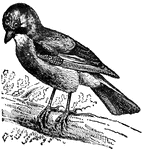
Jay
"Jay is the popular name of a species of birds belonging to the crow family, of a vinous red color;…
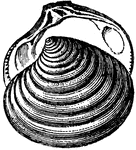
Astarte sulcata
"Astarte sulcata; In some systems of zoological classification, a family of dimyarian bi-valves, an…

Octopus
"The Octopus is the typical genus of the family Octopodidæ. The body is oval, warty, or cirrose,…

Water Opossom
"Opossom is the popular name for the pouched mammals which have a geographical range from the United…

Doctor
"This striking picture, by a celebrated French artist, has excited marked attention ever since it was…
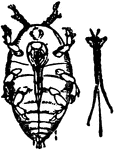
Phylloxera
"Pylloxera is a genus of insects allied to the Aphis and Coccus families. The Phylloxeridæ attach…
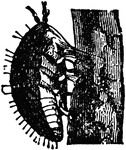
Phylloxera
"Pylloxera is a genus of insects allied to the Aphis and Coccus families. The Phylloxeridæ attach…
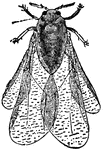
Phylloxera
"Pylloxera is a genus of insects allied to the Aphis and Coccus families. The Phylloxeridæ attach…

Raven
"The Raven is a large bird of the crow family. The raven has played an important part in mythology and…

Rhinoceros Bicornis
"Rhinoceros Atelodus, with two well-marked species, peculiar to Africa. Incisors rudimentary or wanting,…

Sarcophagus of Scipio
"Sarcophagus, plural Sarcophagi, is a kind of stone used among the Greeks for making coffins, and so…

Hooded Seal
"The Seal, of the family Phocidæ, or seal tribe, are, of all four-limbed mammiferous animals,…
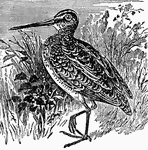
Snipe
"Snipe is the name of a common family of birds. The common American snipe is about equal in size to…
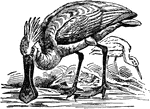
Spoonbill
"Spoonbill is the popular name of the birds of the genus Platalea, belonging to the heron family (Ardeidæ),…

